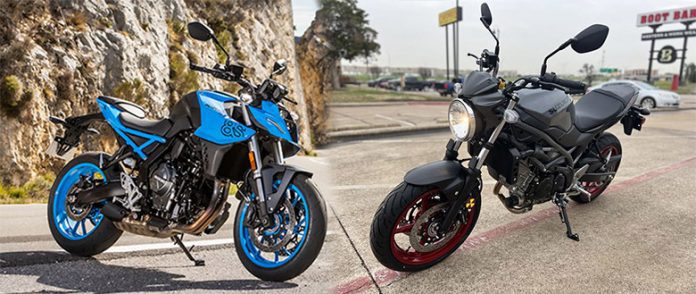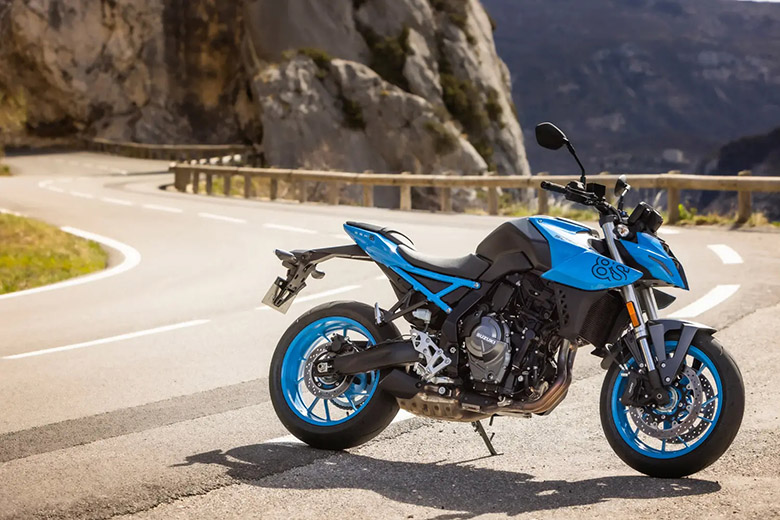Our today’s article is about the comparison review between 2023 Suzuki GSX-8S vs 2023 Suzuki SV650. The SV650, the motorcycle that helped over a million people get their motorcycle licenses, is loved by supertun racers and riding schools. Now, however, it’s been running a bit, and when the 2023 Suzuki GSX-8S was unveiled, many believed it would replace its larger and marginally more basic sibling. Lets have a detailed comparison review between 2023 Suzuki GSX-8S vs 2023 Suzuki SV650.
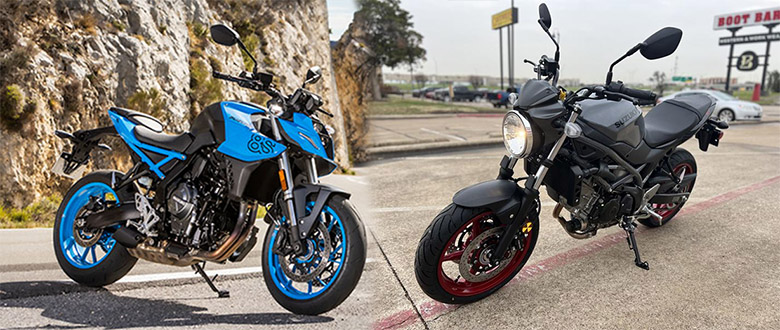
2023 Suzuki GSX-8S vs 2023 Suzuki SV650 – Features Comparison
The problem is that it doesn’t look like the SV, which debuted in 1999, is going anywhere for the foreseeable future. After speaking with Suzuki, I learned that the business wants to hang on to the V-twin roadster as long as possible. Because the engine’s relatively low compression makes it easy to adjust for emissions compliance, Suzuki will continue to produce the model as long as sales are high.
It is fantastic news for SV enthusiasts. Still, it can present a problem for those seeking a motorcycle immediately after obtaining a full or A2 motorcycle license. On the one hand, you have the tried-and-true SV650, which still entices you into the Suzuki line-up, but on the other hand, you also have Hamamatsu’s new rival, the GSX-8S, which is even better.
Comes with a chassis. , superior electronics package, and power sitting on top of it – and only for a bit of money. The SV now costs £7,199, but the top-spec GSX-8S is just £8,199. Based on the spec sheet alone, the new bike looks like an exceptional value. Are there any factors to consider with these two machines produced by Suzuki?
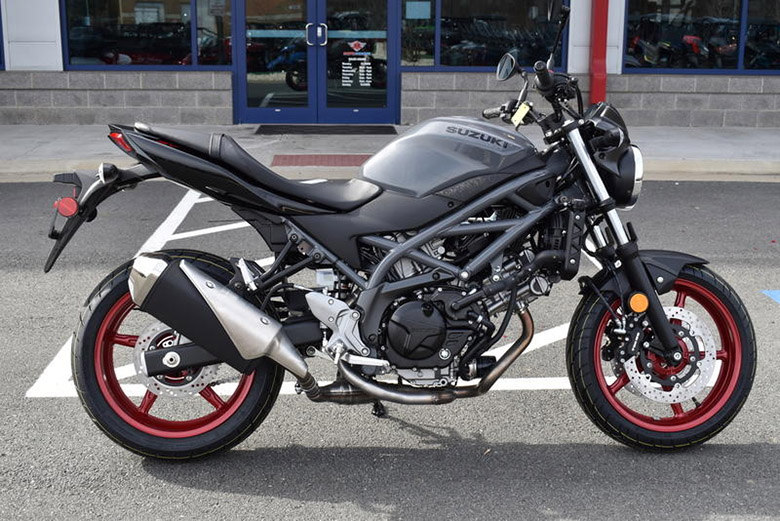
When this issue was presented, some of BikesCatalog‘s social media readers suggested that the GSX might be too much for less experienced riders. You can’t dispute that the GSX can be seen at the higher end of the “new bike for a new rider” spectrum with 81.7bhp on tap and 57 lb-ft of torque. The addition of traction control, stronger brakes, and improved suspension partially alleviates this problem, but on the other hand, younger riders may want to consider building in-built traction control.
The SV650 has mostly stayed the same since it was initially introduced and still has a conventional ABS, no traction control, and non-adjustable telescopic forks. As you move forward, the ride isn’t the best, and the smaller SV visibly shows its age when you go back and forth between the two bikes.
Although it has a certain appeal, pushing it hard on UK roads will get you to the limit quicker than the GSX-8S. But the SV is a good handler. In the right hands and with a few minor tweaks, it can perform abominably on the road and track days. However, most ‘new’ riders need more skills to extract this performance from a stock SV.
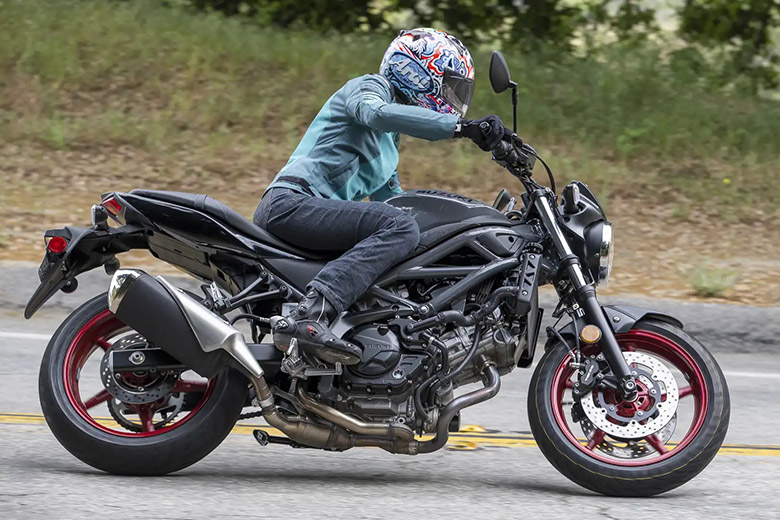
You can understand why the SV650 is such a popular bike among riding schools, beginner riders, and those returning to the world of two wheels once you’re out of the country and back into the real world. Come. It’s still a straightforward bike to get things going. It feels light and agile and has a comfortable delivery that gives the impression that anyone (of any ability) can ride it.
Although the LCD dash is noticeably degraded, it is still easy to read and contains all the necessary information. In addition, there are progressive brakes, a smooth gear change, and a clutch and throttle linkage that is incredibly light.
The SV also accomplishes something the GSX-8S doesn’t: it looks like an authentic vintage roadster from the 1990s or 2000s. To begin with, it has a correct circular headlight, and an incandescent lamp is installed (remember those?) It still looks more attractive to me than a face with an angular LED cluster that looks robotic.
Additionally, there is a beautiful trellis frame. Although uncommon, perimeter and twin-spar structures are becoming popular as manufacturers increasingly favor the parallel-twin cylinder configuration.
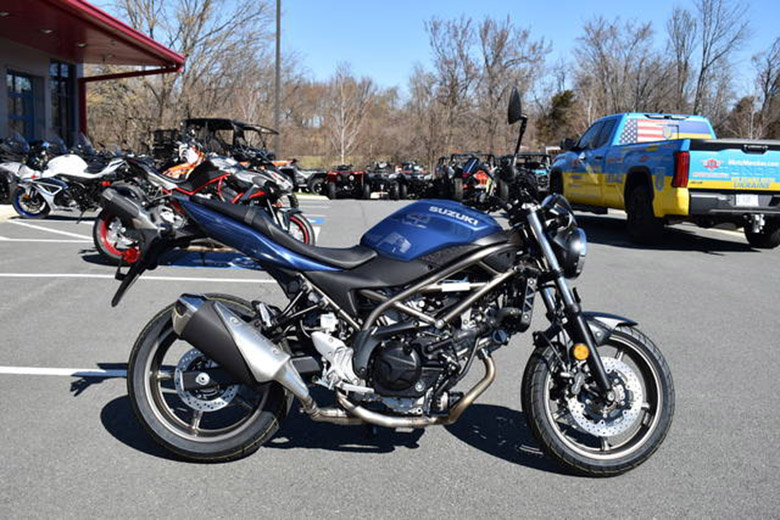
When everything is considered, the new Suzuki GSX-8S and SV650 sound less like brothers and sisters and more like direct competitors. They both aim to serve the same purpose, but the GSX focuses on engine performance, handling characteristics, and styling. At the same time, the SV is more content to charm you with its unmistakable charm and quiet personality.
Emissions restrictions will eventually end the SV650’s existence, but I wonder if its obvious alternative might not be the perfect bike to replace it.
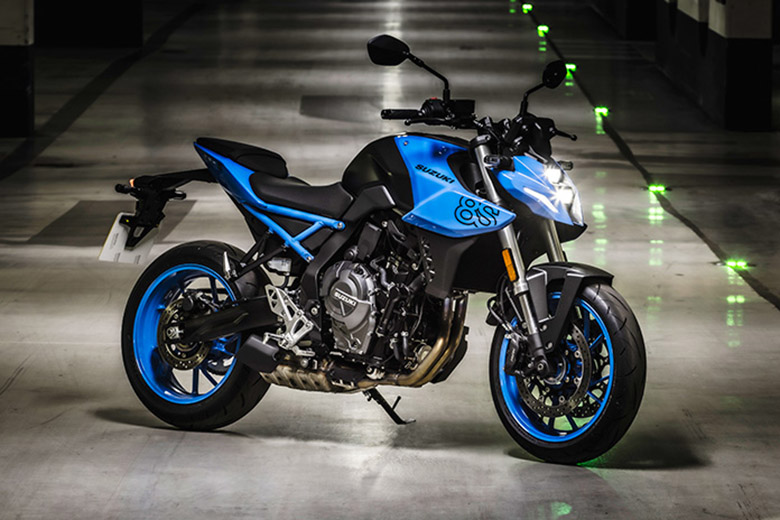
2023 Suzuki GSX-8S vs 2023 Suzuki SV650 – Specifications Comparison
| Specs \ Bikes | 2023 Suzuki GSX-8S | 2023 Suzuki SV650 |
|---|
Engine and transmission
| Displacement | 776.0 ccm (47.35 cubic inches) | 645.0 ccm (39.36 cubic inches) |
| Engine type | Twin, four-stroke | V2, four-stroke |
| Engine details | 270-degree crankshaft layout | 90-degree V-Twin |
| Compression | 12.8:1 | 11.2:1 |
| Bore x stroke | 84.0 x 70.0 mm (3.3 x 2.8 inches) | 81.0 mm x 62.6 mm (3.2 inches x 2.5 inches) |
| Valves per cylinder | 4 | 2 |
| Fuel system | Injection | Injection. Fuel injection with SDTV |
| Fuel control | Double Overhead Cams/Twin Cam (DOHC) | Double Overhead Cams/Twin Cam (DOHC) |
| Ignition | Transistorized | Transistorized |
| Lubrication system | Forced feed circulation, Wet sump | Wet sump |
| Cooling system | Liquid | Liquid |
| Gearbox | 6-speed | 6-speed |
| Transmission type | Chain (final drive) | Chain (final drive) |
| Clutch | Wet, multi-plate | Wet, multi-plate |
| Fuel consumption | 4.20 liters/100 km (23.8 km/l or 56.00 mpg) | 3.41 liters/100 km (29.3 km/l or 68.98 mpg) |
| Greenhouse gases | 97.4 CO2 g/km. (CO2 – Carbon dioxide emission) | 79.1 CO2 g/km. (CO2 – Carbon dioxide emission) |
Chassis, suspension, brakes and wheels
| Frame type | Steel | Trellis, steel |
| Rake (fork angle) | 25.0° | 25.0° |
| Trail | 104 mm (4.1 inches) | 104 mm (4.1 inches) |
| Front Suspension | KYB inverted front forks | Telescopic, coil spring, oil damped |
| Front-wheel travel | 130 mm (5.1 inches) | 125 mm (4.9 inches) |
| Rear Suspension | Adjustable KYB link-type | Link type, single shock, coil spring, oil damped |
| Rear wheel travel | 130 mm (5.1 inches) | 63 mm (2.5 inches) |
| Front tire | 120/70-ZR17 | 120/70-ZR17 |
| Rear tire | 180/55-ZR17 | 160/60-ZR17 |
| Front brakes | Double disc. ABS | Double disc. 4-piston calipers |
| Diameter | 310 mm (12.2 inches) | 290 mm (11.4 inches) |
| Rear brakes | Single disc. ABS | Single disc. 1-piston caliper |
| Diameter | 240 mm (9.4 inches) | 240 mm (9.4 inches) |
| Wheels | Cast aluminum alloy | Five-spoke, red-cast aluminum alloy. Dunlop Road Smart III tires. |
Physical measures and capacities
| Weight incl. oil, gas, etc | 202.0 kg (445.3 pounds) | 196.0 kg (432.1 pounds) |
| Seat height | 810 mm (31.9 inches) If adjustable, lowest setting. | 785 mm (30.9 inches). If adjustable, lowest setting. |
| Overall height | 1105 mm (43.5 inches) | 1090 mm (42.9 inches) |
| Overall length | 2115 mm (83.3 inches) | 2140 mm (84.3 inches) |
| Overall width | 775 mm (30.5 inches) | 760 mm (29.9 inches) |
| Ground clearance | 145 mm (5.7 inches) | 135 mm (5.3 inches) |
| Wheelbase | 1465 mm (57.7 inches) | 1445 mm (56.9 inches) |
| Fuel capacity | 14.00 litres (3.70 US gallons) | 14.50 litres (3.83 US gallons) |

